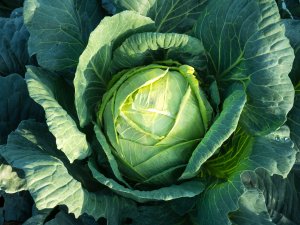What is the best Cabbage substitute?
Are you looking for a cabbage substitute? There are several vegetables that you can choose from which can be used as substitutes for cabbage in various dishes. Try using Nappa Cabbage, Savoy Cabbage, Kale, Brussels Sprouts, Bok Choy, Collard Greens, Broccoli Stems, Cauliflower, Celery or Iceberg Lettuce.
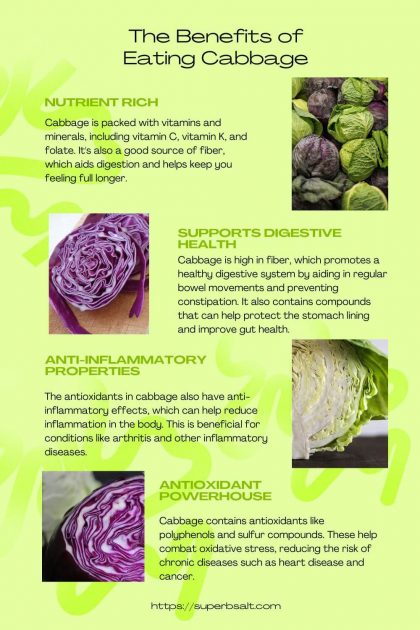
What is Cabbage?
Cabbage is a leafy vegetable that belongs to the Brassica family, which also includes vegetables like broccoli, cauliflower, and Brussels sprouts. It is known for its round or oval-shaped head consisting of tightly packed leaves. Cabbage is widely cultivated and consumed around the world due to its versatility, nutritional value, and the ability to be stored for relatively long periods.
While fresh cabbage is often preferred for its crispness and natural taste, did you know there are other alternatives you could use? These can be especially handy for certain dishes or for times when fresh cabbage isn’t readily available. However, keep in mind that the texture, flavor, and application of cabbage might vary depending on the form you use.
- Fresh: Use fresh cabbage in salads, slaws, stir-fries, soups, stews, and as a side dish. Its crisp texture and slightly crunchy leaves make it a versatile ingredient in both raw and cooked dishes.
- Fermented: Cabbage is a key ingredient in many fermented dishes, such as sauerkraut and kimchi. Fermentation involves allowing beneficial bacteria to naturally preserve the cabbage, creating tangy and flavorful condiments.
- Pickled: Cabbage can also be pickled in vinegar-based brines to create tangy and slightly sour pickled cabbage. This is often used as a condiment or topping for sandwiches, hot dogs, and more.
- Canned: Canned cabbage is available in some stores and can be used in various cooked dishes. However, the texture and flavor might differ from fresh cabbage.
- Frozen: Cabbage can be blanched and then frozen for later use. While freezing can affect the texture of the leaves, it can still be used in cooked dishes like soups and stews.
- Dried: Dehydrated cabbage is available as a shelf-stable ingredient. Use in soups, stews, and other dishes where rehydration is possible.
- Powdered: Cabbage powder is made by drying and grinding cabbage. Use it to add flavor and color to dishes, such as sauces, soups, and dressings.
- Preserved: Cabbage can be preserved through methods like salting or brining, which help extend its shelf life and change its texture and flavor.
Okay, before we look at your cabbage substitute options, let’s deal with that empty cupboard situation!
Where can I buy Cabbage?
If you want to be more prepared and ensure you don’t run out of cabbage then you should stock up now.
Nowadays most delicatessens and general supermarkets stock a wide variety of cabbage, in all its different forms
Or if you prefer you can also purchase cabbage on-line. Here is a link for powdered cabbage which you might like to try.
So why not jump on and place your order today.
STOCK UP NOW!
Sprinkle into baked goods, smoothies, sauces and stews. 100% organic. Full of Vitamin C and K. Excellent for gut health.
Vegan, Organic, GMO-Free, and Gluten- Free.
What can I substitute for Cabbage?
Here are some of the best ingredients to substitute the flavor and role that cabbage provides in your recipes.
- Nappa Cabbage
- Savoy Cabbage
- Kale
- Brussels Sprouts
- Bok Choy
- Collard Greens
- Broccoli Stems
- Cauliflower
- Celery
- Iceberg Lettuce
Cabbage substitute
Nappa Cabbage
Napa cabbage is a great substitute for traditional cabbage, as it has a milder and sweeter flavor, as well as more delicate leaves. It works well in a variety of dishes, especially those with an Asian influence. Here are some ways you can use Napa cabbage as a substitute for regular cabbage:
- Stir-Fries: Napa cabbage is excellent for stir-fries. Cut the leaves and stems into bite-sized pieces and stir-fry them with other vegetables, protein, and your choice of sauces. Its tender texture and mild flavor complement stir-fried dishes.
- Salads: Use thinly sliced Napa cabbage as a base for salads. Its crispness adds a refreshing crunch to salads, and its mild flavor also pairs well with various dressings and toppings.
- Wraps: Napa cabbage leaves are flexible and make great wraps. Try using them as a substitute for tortillas or lettuce wraps. Fill them with ingredients like grilled chicken, tofu, rice, and vegetables, and then roll them up.
- Kimchi: Napa cabbage is commonly used to make kimchi, a Korean fermented dish. If you want you can make your own Napa cabbage kimchi by layering the leaves with a mixture of seasonings and allowing them to ferment.
- Soups and Stews: Add chopped Napa cabbage to soups and stews. Its mild flavor will absorb the flavors of the broth, enhancing the overall taste of the dish.
- Spring Rolls: Use Napa cabbage leaves to wrap spring rolls. Fill them with a mix of vegetables, protein, and noodles, then roll them up and serve with dipping sauce.
- Noodle Dishes: Add sliced Napa cabbage to noodle dishes like stir-fried noodles or noodle soups. It adds both flavor and texture to the dish.
- Side Dishes: Steam or blanch Napa cabbage and serve it as a side dish. You can also drizzle it with soy sauce, sesame oil, or other seasonings for added flavor.
Remember that Napa cabbage has a more delicate texture than traditional cabbage, so it may not hold up as well in long cooking times. Adjust your cooking methods accordingly so you can keep its tender quality.
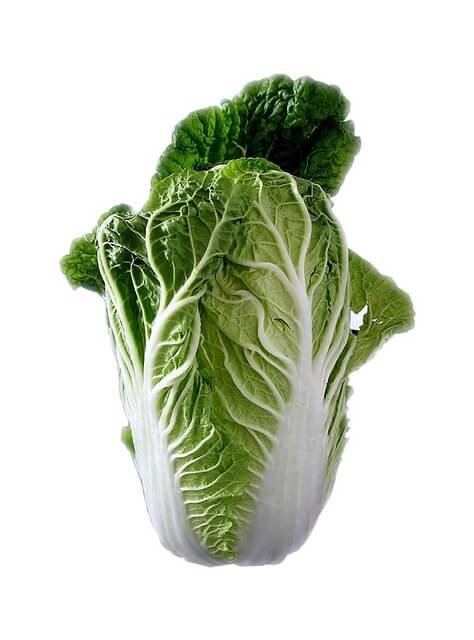
Savoy Cabbage
Savoy cabbage, with its crinkled leaves and milder flavor, can be a great substitute for regular cabbage in various dishes. Its tender texture makes it well-suited for both raw and cooked preparations. Here are some ways you can use Savoy cabbage as a substitute for traditional cabbage:
- Cabbage Rolls: Use Savoy cabbage leaves as a wrap for cabbage rolls. The crinkled leaves are pliable and can be easily folded around a filling of rice, ground meat, and vegetables before being baked in sauce.
- Stir-Fries: Savoy cabbage works well in stir-fry dishes. Cut it into thin strips or bite-sized pieces and add it to your stir-fry along with other vegetables and protein.
- Soups and Stews: Add chopped or shredded Savoy cabbage to soups and stews. Its tender leaves will cook relatively quickly and add flavor and texture to your dish.
- Salads: While Savoy cabbage is not as commonly used in salads as other cabbage varieties, its leaves can still be used raw in salads. The crinkled texture can add an interesting element to your salad.
- Slaws: Make coleslaw using thinly sliced Savoy cabbage. Its tender leaves will make for a softer slaw compared to traditional cabbage.
- Sautéed Side Dish: Sauté shredded or sliced Savoy cabbage with some olive oil, garlic, and seasonings. The leaves will cook down and develop a sweet flavor.
- Stuffed Vegetables: Use Savoy cabbage leaves as wrappers for stuffed vegetables. For example, you can use them to wrap a mixture of rice, vegetables, and herbs before baking or steaming.
- Grilled or Roasted: Cut Savoy cabbage into wedges and grill or roast them. The edges will caramelize and become slightly crispy, adding a different dimension to the cabbage’s flavor and texture.
- Cabbage Chips: Just like with other cabbage varieties, you can make cabbage chips by baking or frying Savoy cabbage leaves until they’re crispy and lightly seasoned.
Savoy cabbage’s unique appearance and tender leaves can bring a different look and taste to your dishes compared to traditional cabbage.
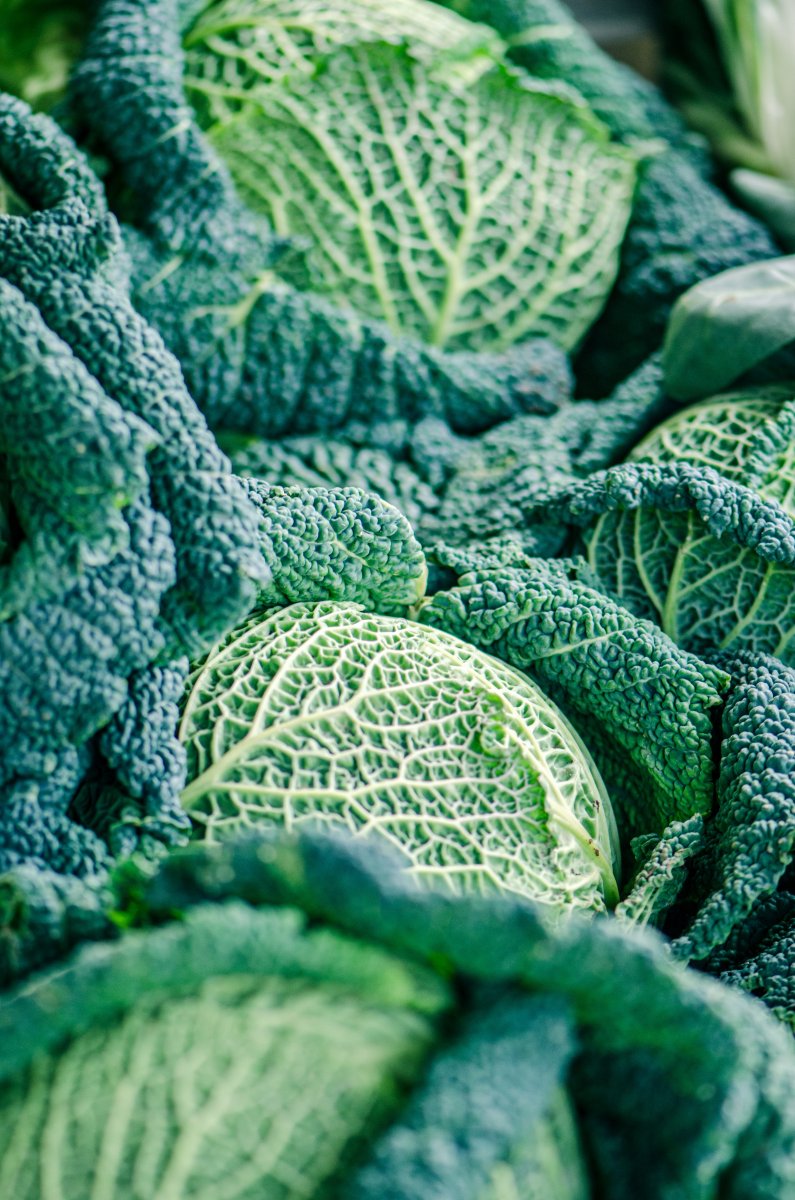
Kale as a cabbage substitute
Kale can be a nutritious and flavorful substitute for cabbage in various dishes, although it has a slightly different taste and texture. It is a leafy green that tends to have a stronger and earthier flavor compared to cabbage. Here are some ways you can use kale as a substitute for cabbage:
- Salads: Kale can be used in salads as a substitute for cabbage. However, keep in mind that kale leaves can be tougher, so it’s best to massage them with a little olive oil and lemon juice or vinegar to help tenderize the leaves before using them in salads.
- Stir-Fries: Sautéed kale can work well in stir-fry dishes. Just like cabbage, you can cut it into thin strips or bite-sized pieces and stir-fry it with other vegetables, protein, and your choice of seasonings.
- Soups and Stews: Add chopped kale to soups and stews. Kale adds a nutrient boost and holds up well in simmering liquids, imparting its unique flavor to the dish.
- Casseroles and Bakes: Incorporate chopped kale into casseroles and baked dishes. It can add color, flavor, and a slightly different texture to your meals.
- Smoothies: Kale is often used in green smoothies due to its high nutrient content. You can blend it with fruits, yogurt, or other ingredients to create a nutritious and vibrant smoothie.
- Pasta Dishes: Add sautéed or blanched kale to pasta dishes. It can add both flavor and color to your pasta creations.
- Stuffed Vegetables: Use kale leaves as wrappers for stuffed vegetables or rolls. Fill them with a mixture of grains, vegetables, and protein before baking or steaming.
- Side Dish: Sauté kale with garlic, olive oil, and a pinch of red pepper flakes for a flavorful and healthy side dish.
- Kale Chips: Just like cabbage leaves can be turned into crispy chips, kale leaves can be baked to make kale chips. Season them with your favorite spices for a crunchy snack.
It’s important to note that kale can be quite fibrous, so it might need longer cooking times or some tenderizing techniques to make it more palatable in certain dishes. Additionally, while kale offers a distinct flavor, it may alter the taste of dishes compared to using cabbage.
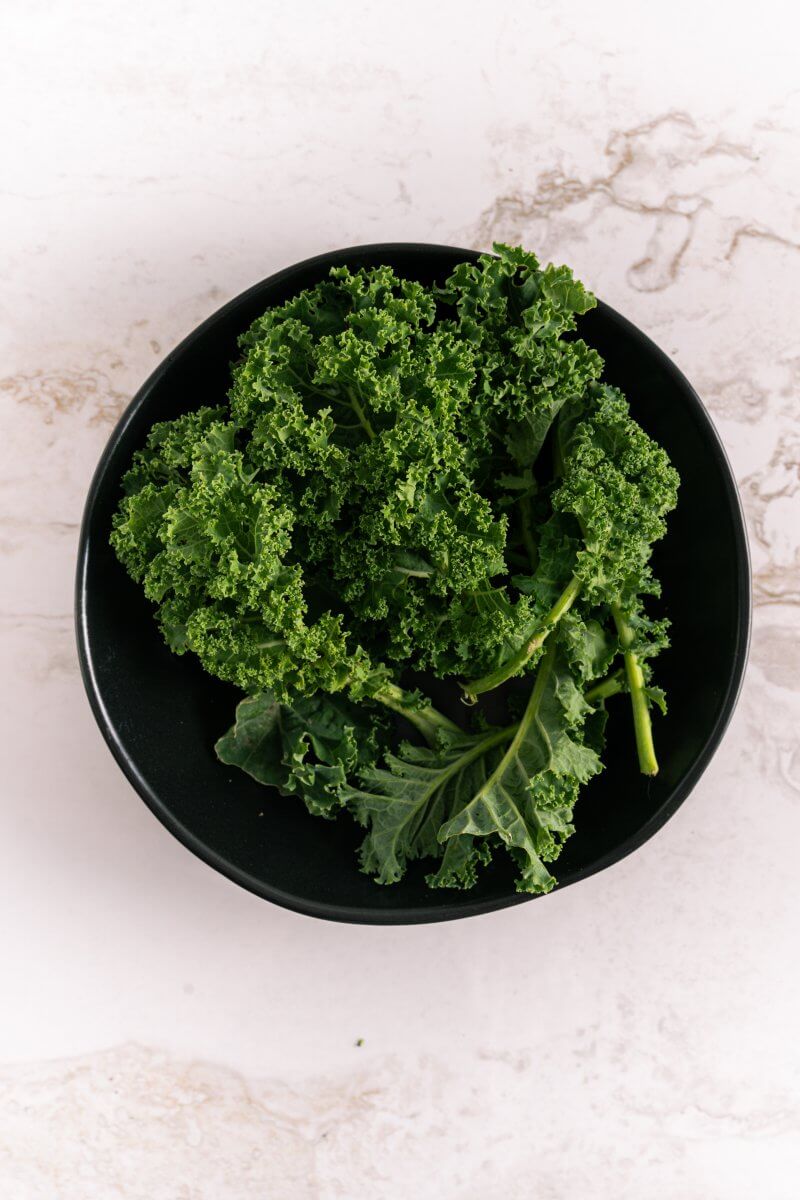
Brussels Sprouts
Brussels sprouts, while not the same as traditional cabbage, belong to the same family and can be used in similar ways in various dishes. They have a distinct flavor and texture, so using them as a substitute for cabbage can bring a unique twist to your recipes. Here are some ways you can use Brussels sprouts as a substitute for cabbage:
- Stir-Fries: Slice Brussels sprouts thinly and use them in stir-fry dishes. They add a delicious crunch and a slightly nutty flavor to the dish.
- Salads: Shave or thinly slice Brussels sprouts to use in salads. They can provide a hearty and crisp texture, similar to cabbage, while adding a different taste.
- Slaws: Make a Brussels sprouts slaw by shredding the sprouts and combining them with other slaw ingredients like carrots, apples, and a flavorful dressing.
- Roasted Dishes: Roasted Brussels sprouts can be a tasty and nutritious addition to a variety of dishes. You can roast them with other vegetables, protein, or you could even toss them in with cooked pasta.
- Casseroles: Incorporate Brussels sprouts into casseroles and bakes. They can add a unique flavor and texture to the dish.
- Soups and Stews: Add halved or sliced Brussels sprouts to soups and stews. They can provide a hearty and nutritious element to the recipe.
- Stuffed Brussels Sprouts: Similar to stuffed cabbage leaves, you can stuff individual Brussels sprouts with a mixture of ingredients like rice, quinoa, or meat before baking them.
- Grilled Dishes: Grill Brussels sprouts on skewers or in a grilling basket. They develop a delicious charred flavor and crispy edges.
- Sautéed Side Dish: Sauté Brussels sprouts with garlic, olive oil, and seasonings for a simple and flavorful side dish.
- Toppings: Use roasted or fried Brussels sprout leaves as toppings for various dishes, adding a unique crunch and taste.
Remember that Brussels sprouts have a distinct, slightly bitter flavor compared to cabbage. This can enhance some dishes but might alter the taste of others. It’s always a good idea to adjust seasonings and other ingredients to complement the specific characteristics of Brussels sprouts when using them as a substitute for cabbage.
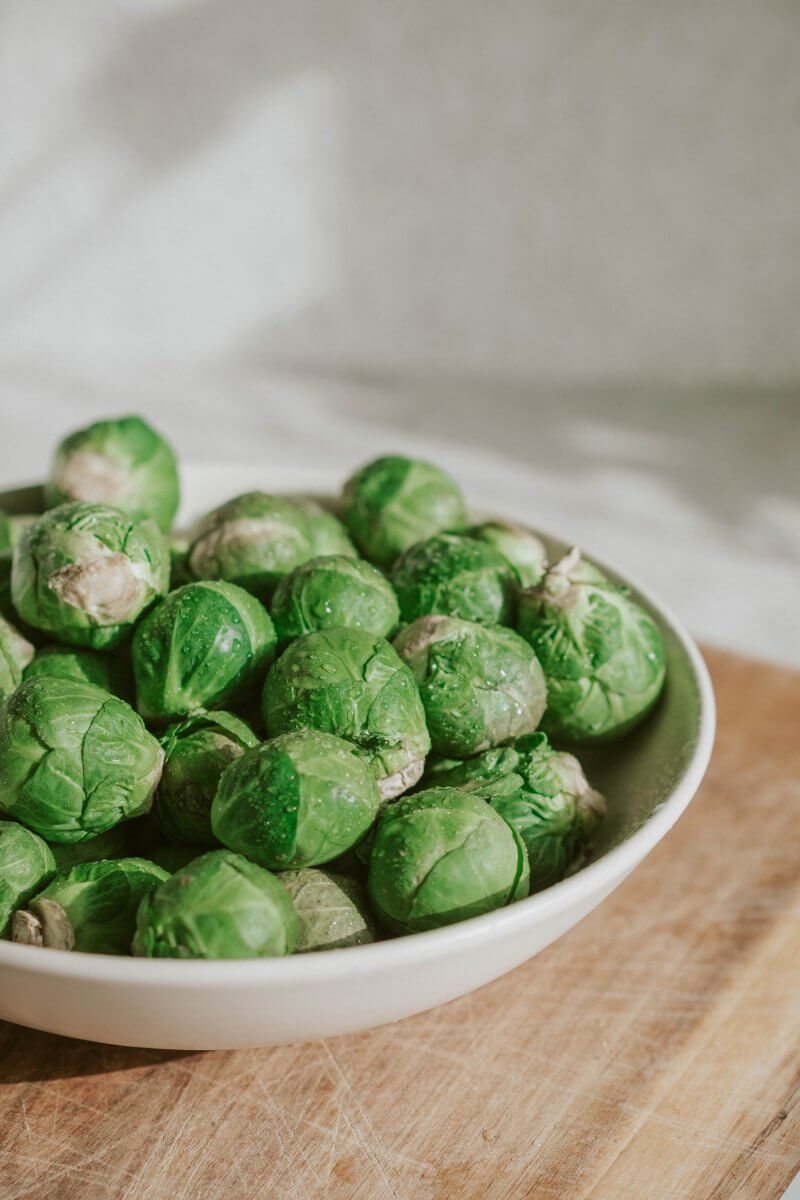
Bok Choy
Bok choy, also known as Chinese cabbage, is another leafy green that can be used as a substitute for traditional cabbage in certain dishes. It has tender stems and dark green leaves with a mild flavor. While it’s not exactly the same as cabbage, its versatility makes it a great alternative in various recipes. Here’s how you can use bok choy as a substitute for cabbage:
- Stir-Fries: Bok choy is commonly used in stir-fry dishes. Cut the stems and leaves into bite-sized pieces and stir-fry them with other vegetables, protein, and your choice of sauces.
- Asian-Inspired Dishes: Since bok choy is often used in Asian cuisine, you can use it as a substitute for cabbage in recipes like spring rolls, dumplings, and noodle dishes.
- Soups and Broths: Add bok choy to soups and broths. It can add a tender and slightly sweet element to the dish as it simmers.
- Salads: While bok choy is not typically used raw in salads, you can blanch or lightly steam the leaves before adding them to salads for a unique twist.
- Side Dish: Bok choy can be a simple side dish when sautéed with garlic, ginger, and a touch of soy sauce or sesame oil.
- Bok Choy Slaw: Create a slaw using thinly sliced bok choy stems and leaves. Combine them with other slaw ingredients and your preferred dressing.
- Stuffed Bok Choy: Similar to stuffed cabbage leaves, you can stuff individual bok choy leaves with a flavorful mixture before baking.
- Grilled or Griddled: Halve or quarter bok choy and grill or griddle it for a delicious charred flavor. Drizzle with a sauce or dressing for added flavor.
- Noodle Soups: Add bok choy to noodle soups for an extra element of freshness and nutrition.
Remember that bok choy’s flavor is milder and slightly sweeter than traditional cabbage, so it might affect the overall taste of the dish. Bok choy’s tender stems and leaves can be a delightful addition to a variety of recipes.
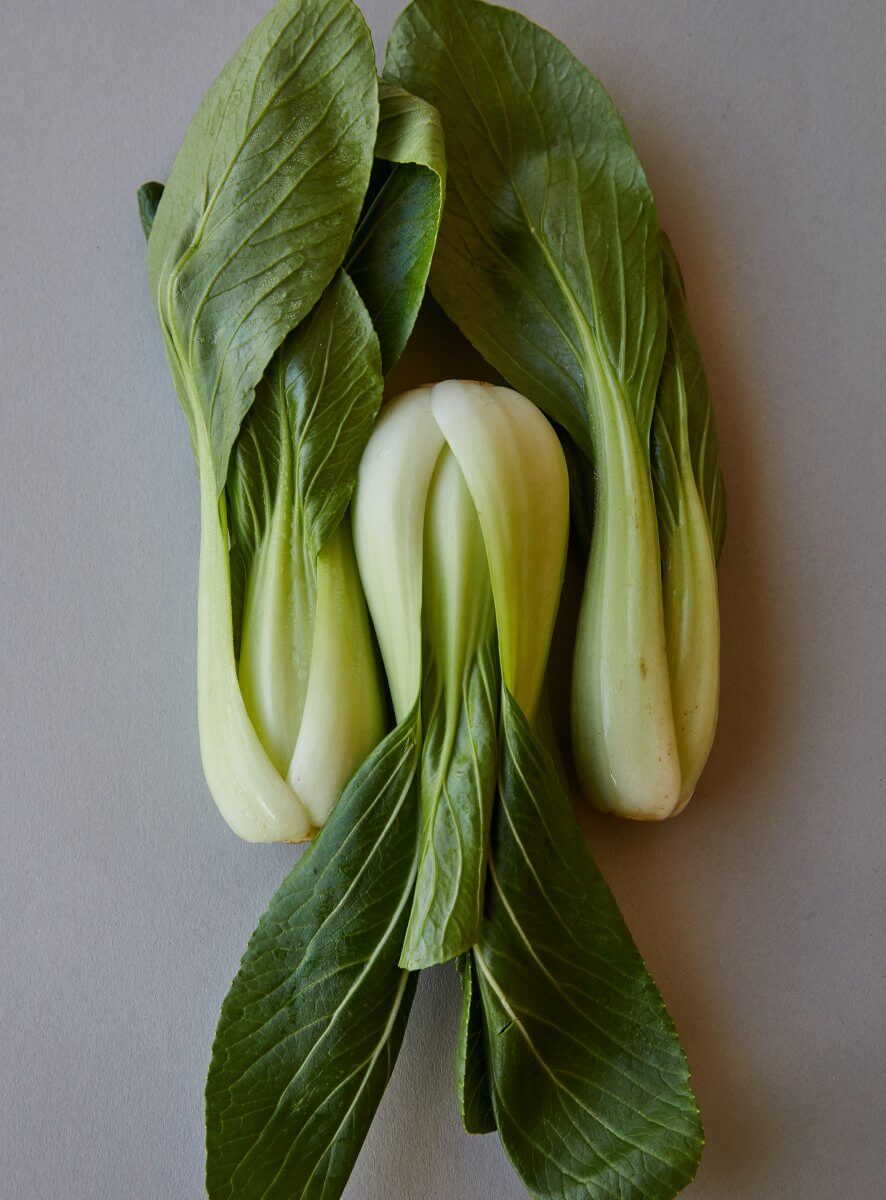
Collard Greens
Collard greens are a leafy green vegetable that can be used as a substitute for cabbage in certain dishes. They have sturdy leaves that hold up well in cooking, making them a great choice for recipes that require longer cooking times. Here’s how you can use collard greens as a substitute for cabbage:
- Stews and Soups: Collard greens work well in hearty stews and soups. Chop or shred the leaves and add them to the pot. They will soften as they cook and add a nutritious element to the dish.
- Casseroles: Use collard greens in casseroles that call for cabbage. They can provide a similar texture and contribute their unique flavor to the dish.
- Stuffed Leaves: Use the collard green leaves as wrappers for stuffing. Fill them with a mixture of grains, vegetables, and protein, then bake or steam them.
- Sautéed Side Dish: Sauté collard greens with garlic, onions, and seasonings for a flavorful side dish. The leaves will cook down and develop a tender texture.
- Southern-Style Dishes: Collard greens are a staple in Southern cuisine. Prepare them using traditional Southern cooking methods, such as slow cooking with smoked meats or vinegar.
- Stir-Fries: While collard greens are sturdier than cabbage, you can still use them in stir-fries. Cut them into thin strips and stir-fry them with other vegetables and protein.
- Sandwich Wraps: Use collard green leaves as a substitute for tortillas or bread to create healthy sandwich wraps. Fill them with your favorite sandwich ingredients.
- Green Smoothies: Blend collard greens into green smoothies for added nutrients and a boost of color. Their slightly bitter taste can be balanced with sweet fruits.
- Coleslaw: While coleslaw is traditionally made with cabbage, you can experiment with using finely shredded collard greens as a base for a unique variation.
Collard greens have a distinct flavor and a slightly tougher texture compared to cabbage, so they may need slightly longer cooking times in certain dishes. Keep in mind that collard greens may alter the taste and texture of the dishes you’re substituting them into, but they can bring their own set of nutritional benefits and culinary character to your meals.
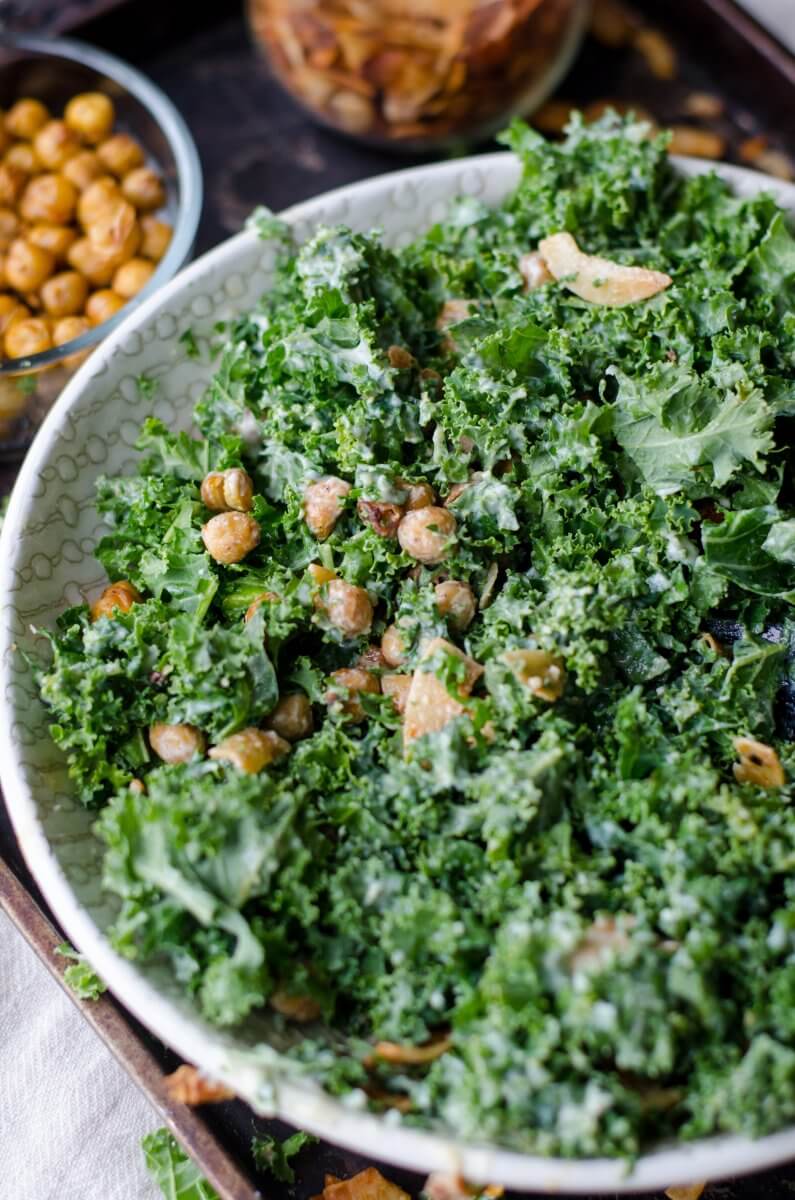
Broccoli Stems
Broccoli stems can be a creative and nutritious substitute for cabbage in various dishes. While broccoli stems are often overlooked, they are edible and can add a unique flavor and texture to your recipes. Here’s how you can use broccoli stems as a substitute for cabbage:
- Slaws: Shred or thinly slice broccoli stems and use them as a base for slaws. Combine them with other slaw ingredients like carrots, apples, and a flavorful dressing.
- Stir-Fries: Cut broccoli stems into thin strips and stir-fry them with other vegetables and protein. They can provide a crunchy and slightly sweet element to your dish.
- Salads: Add chopped or shaved broccoli stems to salads for added texture and nutrition. Their mild flavor can complement a variety of salad ingredients.
- Stuffed Leaves: Similar to cabbage leaves, you can use broccoli leaves or larger stems as wrappers for stuffing. Fill them with a mixture of grains, vegetables, and protein before baking or steaming.
- Pasta Dishes: Cut broccoli stems into matchsticks or thin strips and use them in pasta dishes. They can add a crunchy contrast to the pasta.
- Sautéed Side Dish: Sautéed broccoli stems with garlic, olive oil, and seasonings can make for a simple and tasty side dish.
- Soups and Stews: Add chopped broccoli stems to soups and stews. They can provide an extra layer of flavor and nutrition to your dishes.
- Pickle or Ferment: Just like cabbage can be pickled or fermented, you can do the same with broccoli stems to create unique condiments with a tangy flavor.
- Casserole: Incorporate chopped or sliced broccoli stems into casseroles and bakes. They can add a hearty and nutritious element to the dish.
Broccoli stems have a slightly sweeter taste and a crunchier texture compared to cabbage. Since they can be quite fibrous, you might need to adjust your cooking methods or cut them into smaller pieces for certain dishes. By using broccoli stems creatively, you can enjoy their nutritional benefits while adding a different dimension to your meals.
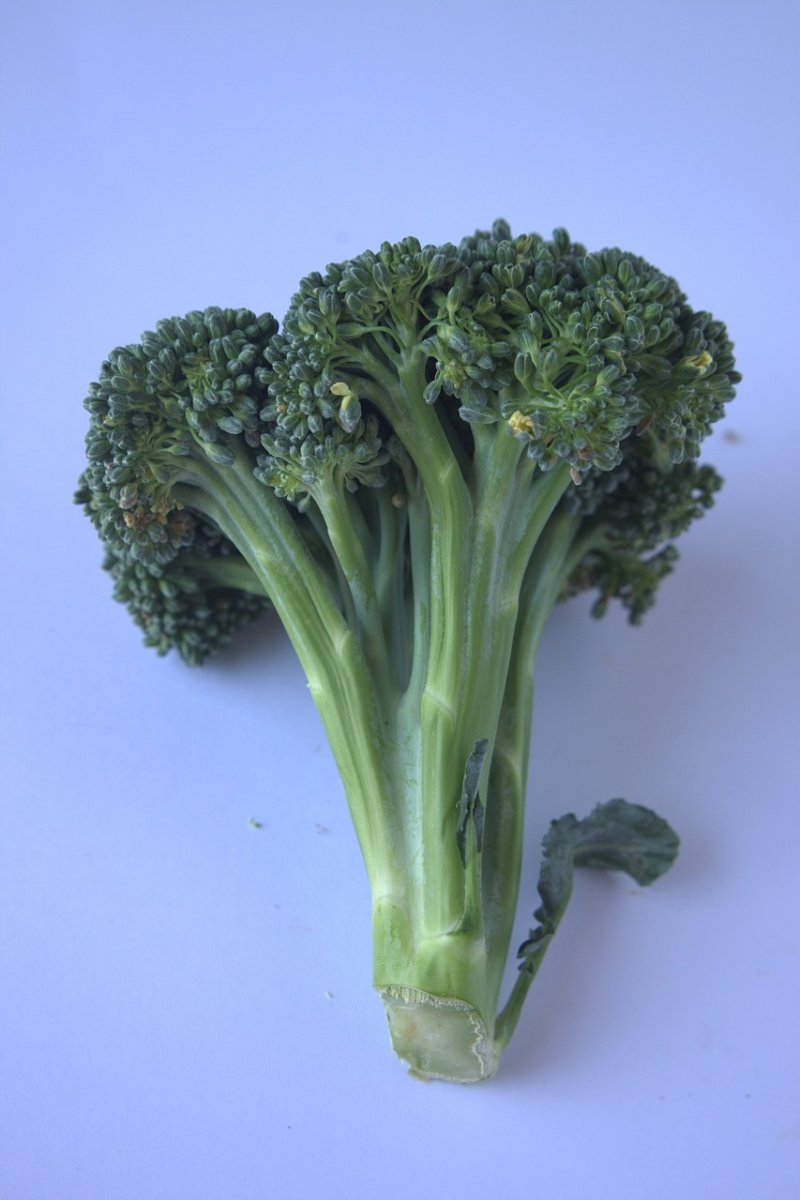
Cauliflower
Cauliflower is a versatile vegetable that can be used as a substitute for cabbage in various dishes. While it has a different texture and flavor, it can still provide a similar level of versatility. Here are some ways you can use cauliflower as a substitute for cabbage:
- Cauliflower Slaw: Make a slaw using finely chopped or grated cauliflower as a base. Combine it with other slaw ingredients and a flavorful dressing.
- Stir-Fries: Cut cauliflower into small florets and use them in stir-fry dishes. They can absorb the flavors of your sauces and work well with other vegetables and protein.
- Cauliflower “Cabbage” Rolls: Use large cauliflower leaves as wrappers for stuffed rolls. Fill them with a mixture of grains, vegetables, and protein before baking or steaming.
- Roasted Dishes: Roast cauliflower florets to create a flavorful and slightly crispy component for your dishes. Use in salads, grain bowls, or as a side dish.
- Cauliflower Kimchi: Make a cauliflower-based version of kimchi by fermenting cauliflower florets with spices and seasonings. It won’t replicate the exact taste of cabbage kimchi, but it can be a unique and tasty variation.
- Cauliflower Soup: Blend cauliflower into soups for a creamy and nutritious base. It can work well in place of cabbage in certain soup recipes.
- Cauliflower Tacos: Use roasted cauliflower florets as a filling for tacos. Add your favorite toppings and sauces for a satisfying meal.
- Cauliflower Wraps: Create wraps using large cauliflower leaves as a substitute for tortillas. Fill them with a variety of fillings for a low-carb alternative.
- Cauliflower Fried Rice: Pulse cauliflower in a food processor to create “cauliflower rice.” Use it as a base for fried rice, substituting it for cabbage.
- Cauliflower Coleslaw: Make a coleslaw using grated cauliflower as a base. Experiment with different dressings and mix-ins to create a unique twist on traditional coleslaw.
Keep in mind that cauliflower has a distinct flavor and texture compared to cabbage, so the end result may not be exactly the same.
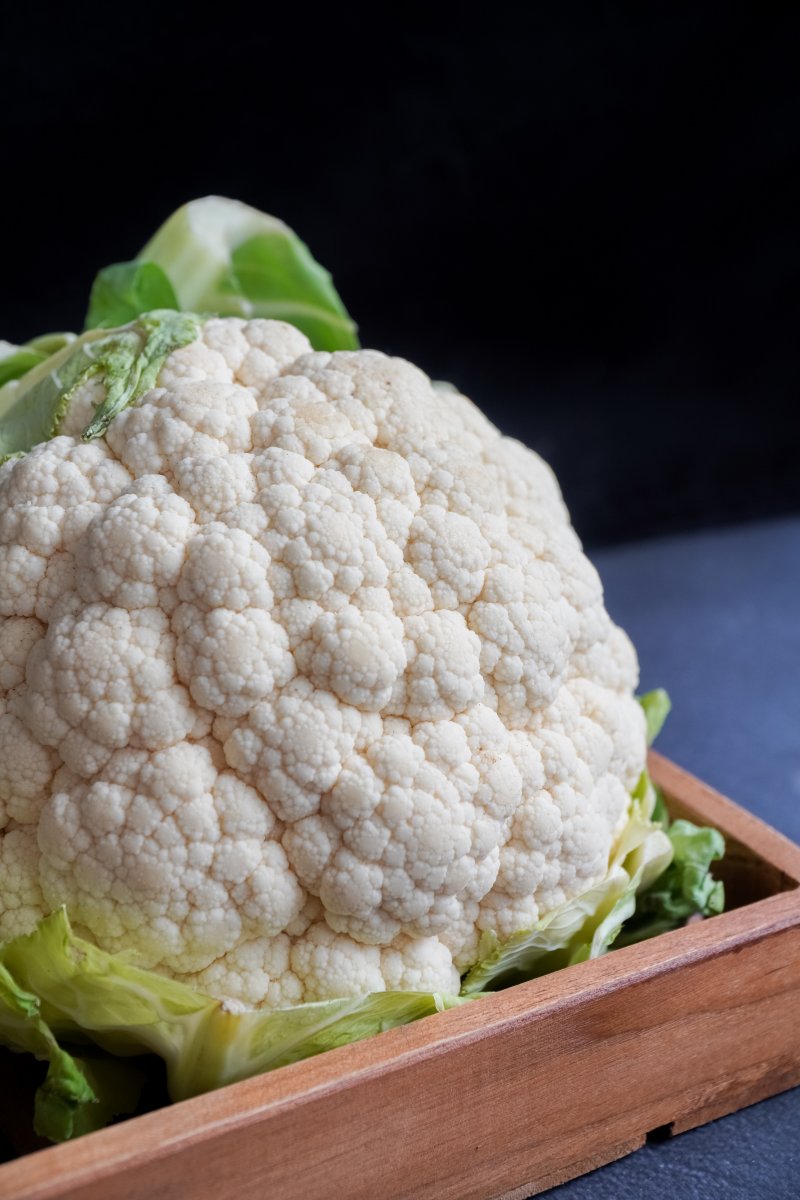
Celery
Celery is a crunchy and flavorful vegetable, but it has a significantly different texture and taste compared to cabbage. While it might not be a direct substitute for cabbage, you can still incorporate celery in certain dishes to add crunch and a fresh flavor. Here are some ways you can use celery creatively:
- Salads: Add chopped celery to salads for its crisp texture and subtle flavor. While it won’t mimic the taste of cabbage, it can provide a refreshing crunch.
- Slaws: Incorporate finely sliced celery into slaws to enhance the overall crunchiness and offer a different type of texture.
- Stir-Fries: Use sliced celery in stir-fry dishes. It can add a unique texture and contribute its fresh flavor to the mix.
- Soups and Stews: Add celery to soups and stews for added flavor and crunch. While it won’t replace the cabbage’s texture, it can still provide a satisfying bite.
- Dips and Spreads: Use finely chopped celery in dips and spreads, such as hummus or yogurt-based sauces, to add an extra layer of texture.
- Sandwiches and Wraps: Include celery in sandwiches and wraps for an extra crunch alongside other ingredients.
- Sautéed Side Dish: Sauté celery with garlic, onions, and other vegetables for a flavorful side dish with a different texture compared to cabbage.
- Stuffing and Stuffings: Add chopped celery to stuffing recipes to provide a refreshing crunch and flavor.
- Snacks: Spread nut butter or cream cheese on celery sticks and top them with dried fruits, nuts, or seeds for a satisfying snack.
While celery might not directly replace cabbage’s properties, it can still contribute to various dishes by adding a distinct texture and a refreshing taste. Experiment with incorporating celery in different recipes to find out how it complements your culinary creations.
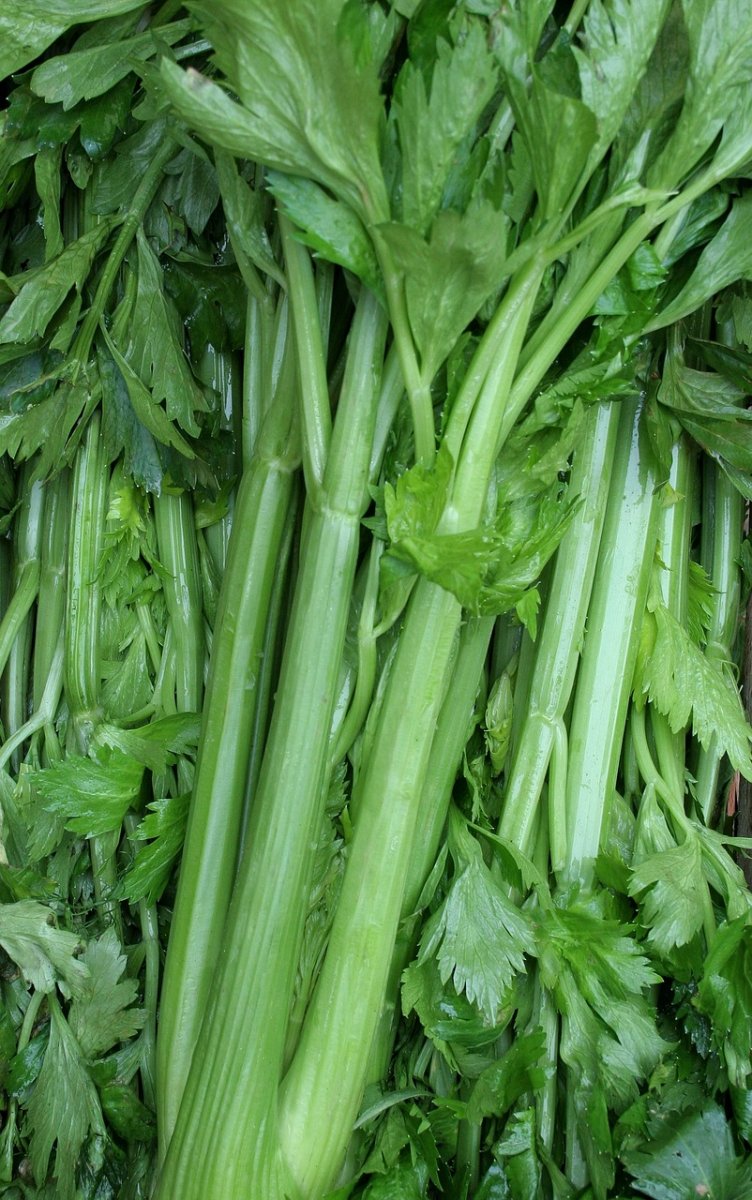
Iceberg Lettuce
Iceberg lettuce is a crisp and refreshing leafy vegetable, but it has a much milder flavor and different texture compared to cabbage. While it might not be a perfect substitute, you can still use iceberg lettuce creatively to add a refreshing element to your dishes. Here are some ways you can use iceberg lettuce:
- Salads: Use iceberg lettuce as a base for salads. While it won’t provide the same crunch and density as cabbage, it can offer a light and refreshing backdrop for other ingredients.
- Lettuce Wraps: Create lettuce wraps by filling individual iceberg lettuce leaves with a mixture of cooked protein, vegetables, and sauces. This is a popular choice in Asian cuisine.
- Burgers and Sandwiches: Use iceberg lettuce leaves as a substitute for traditional burger buns or sandwich wraps. They can add a refreshing and crunchy layer to your creations.
- Tacos and Tostadas: Use iceberg lettuce leaves as taco shells or tostada bases. Fill them with your favorite fillings and toppings.
- Sides: Serve wedge salads by cutting a head of iceberg lettuce into quarters and topping each wedge with bacon, blue cheese, tomatoes, and dressing.
- Layered Salads: Create layered salads in clear containers by alternating layers of iceberg lettuce with other salad ingredients.
- Cold Rolls: Make Vietnamese-style cold rolls by wrapping iceberg lettuce around rice noodles, herbs, shrimp, and other fillings.
- Light Wraps: Use iceberg lettuce leaves to wrap a light and refreshing filling, such as shrimp salad or chicken salad.
- Crunchy Snacks: Use iceberg lettuce leaves as a vessel for crunchy snacks like nut butter, hummus, or even salsa.
Remember that iceberg lettuce is much lighter and more delicate than cabbage, so it might not hold up as well in dishes that require longer cooking times or substantial textures. It’s best used in dishes that benefit from its refreshing and crisp qualities. While it might not directly replace cabbage, it can still add a unique dimension to your culinary creations.
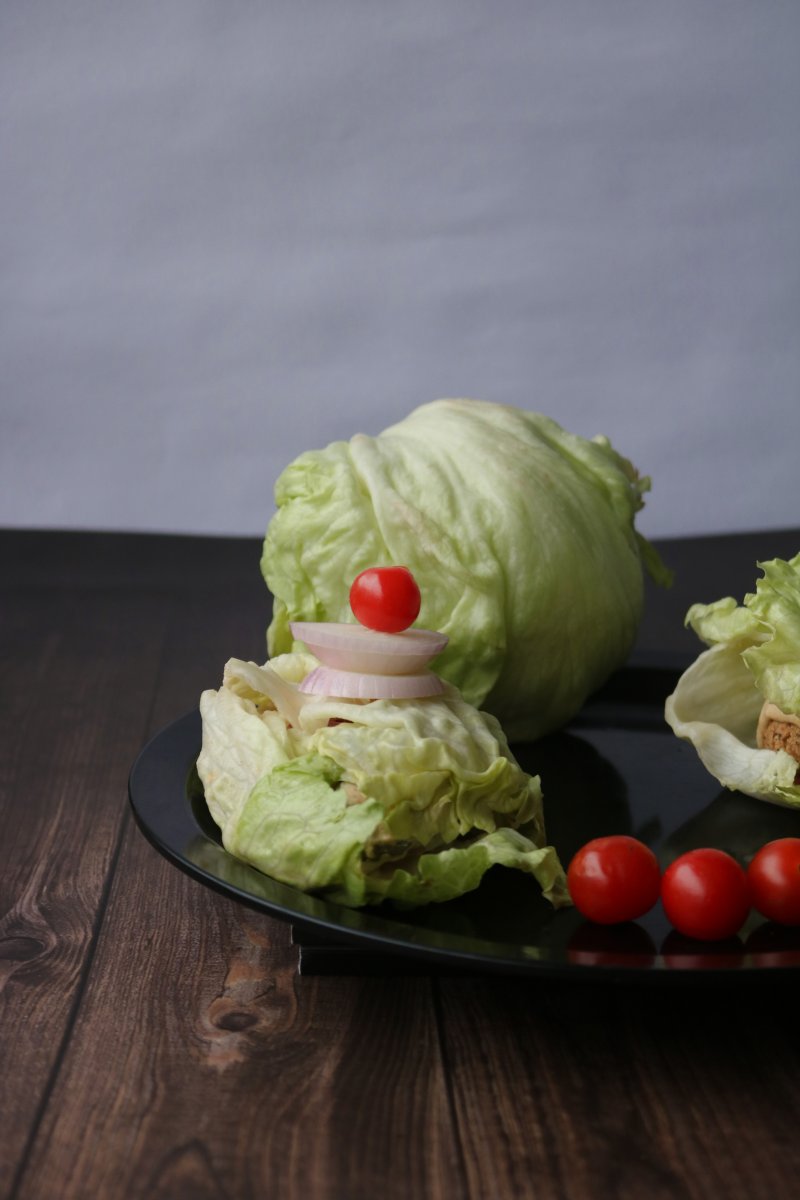
FAQs
What are the benefits of eating cabbage?
Cabbage is a fantastic addition to your diet for a bunch of reasons! It’s packed with vitamins C and K, which are great for your immune system and bone health. This leafy green is also high in fiber, helping with digestion and keeping you full longer. Plus, it’s loaded with antioxidants that fight inflammation and reduce the risk of chronic diseases. Cabbage is low in calories but big on versatility – whether you’re making a crunchy salad, a savory stir-fry, or hearty soups, it’s a great way to add nutrition and flavor to your meals. And it doesn’t matter whether you choose the red or the green variety – so get stuck in!
What is the vegetable that tastes like cabbage?
If you’re looking for a vegetable that tastes like cabbage, give bok choy a try! It has a similar mild, slightly peppery flavor, especially in the leafy green parts. Plus, it’s super versatile—perfect for stir-fries, soups, or even just a quick sauté. Napa cabbage is another good option; it’s a bit sweeter and more tender, making it great for salads and slaws. And don’t forget about Kohlrabi, it is another great option! It has a mild, slightly sweet taste that’s quite similar to cabbage, but with a bit more crunch. The texture is a bit like a broccoli stem, which makes it perfect for adding a bit of bite to salads or slaws. You can also roast, steam, or stir-fry it—basically, anything you’d do with cabbage. Plus, it looks pretty cool with its unique, bulbous shape and leafy stems. Definitely worth a try if you’re looking to mix things up!
What are the different types of cabbage vegetables?
Did you know there are over 400 different varieties of cabbage, ranging in color from green to purple and even red. Each type has its own unique flavor and texture, making cabbage a versatile veggie that can be used in countless dishes around the world, from sauerkraut and kimchi to coleslaw and stir-fries! Here are a few that made our Top 10!
- Green Cabbage: The classic one we all know, perfect for coleslaw and soups.
- Red Cabbage: Known for its vibrant color, great for salads and pickling.
- Savoy Cabbage: Has crinkly leaves and a mild flavor, excellent for stuffed cabbage rolls.
- Napa Cabbage: Also called Chinese cabbage, commonly used in kimchi and stir-fries.
- Bok Choy: A leafy green with crunchy stems, popular in Asian cuisine.
- Brussels Sprouts: Tiny cabbages that are great roasted or sautéed.
- Kohlrabi: A bulbous cabbage relative, delicious raw or cooked.
- January King: A winter cabbage with purple-tinged leaves, hearty and flavorful.
- Pointed Cabbage: Also known as sweetheart cabbage, it has a tender texture and mild taste.
- Spring Greens: Young cabbage with loose leaves, great for quick cooking or steaming.
Each of these varieties brings its own unique twist to dishes, making cabbage an incredibly versatile and interesting vegetable!
Summary for Cabbage substitute
Okay – that’s you all sorted with suitable alternative for cabbage.
In conclusion, cabbage is a versatile and nutritious vegetable that comes in various forms, each with its own flavor and texture. If you’re looking to use substitutes for cabbage in your dishes, there are several options available, depending on the specific characteristics you’re aiming for. Some common substitutes include Napa cabbage, Savoy cabbage, kale, Brussels sprouts, bok choy, broccoli stems, cauliflower, and collard greens.
Remember that while these substitutes can add their own unique flavors and textures to your dishes, they might not perfectly replicate the qualities of cabbage. It’s important to consider the dish you’re making and how the substitute will interact with other ingredients and flavors. Feel free to experiment and adjust your recipes to suit your taste preferences and dietary needs.
Whether you’re making salads, stir-fries, soups, wraps, or other dishes, each substitute has the potential to bring a different twist to your culinary creations, making your meals diverse and enjoyable.
We have gathered together a lot more facts on ingredients such as herbs, spices, oils, nuts, etc. if you would like to learn some more.
